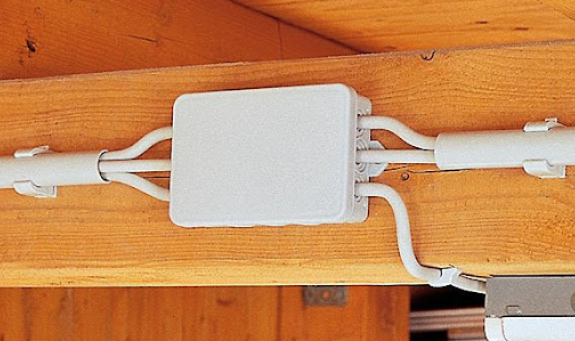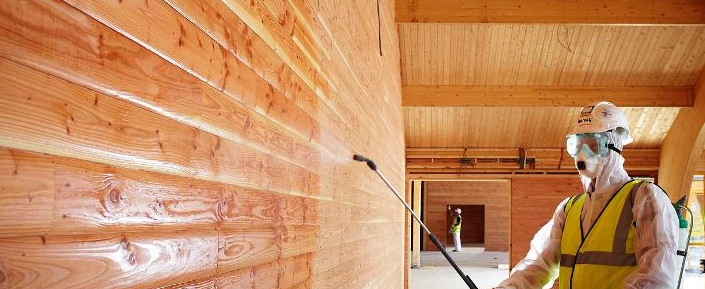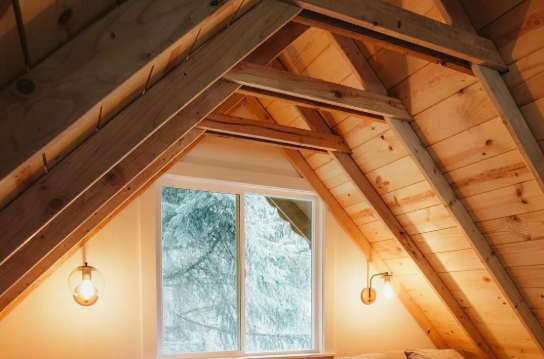RoofInsulation offers a wide range of services related to roofing, insulation, and waterproofing.
Today, we’ll discuss natural wood – a popular construction material often used in Ottawa for attic installations, roofing, and structural work. Wood is extremely durable and relatively lightweight, environmentally friendly, and has low thermal conductivity. However, despite its many advantages, this material has a significant drawback: a high fire hazard. To protect roofing elements from emergencies, attic spaces are treated with fireproofing compounds wooden structures mixtures and impregnations.
Attic Fireproofing Treatment Objectives

The attic is the area between the roof of a building and the top floor of the top floor. To minimize risks, all wooden components are treated with fireproofing compounds wooden structures, which penetrate deeply into the wood and form a fire-resistant layer, preventing flames from spreading.Moreover, this space is particularly suitable and one of the most convenient locations for connecting and running electrical cables and wiring throughout the building. The combination of these factors leads to the conclusion that attics (rooms, halls, and other spaces) are among the most fire-hazardous.
During combustion, natural wood produces heat and carbon dioxide, which together leads to the expansion of the fire zone to other spaces and the release of large quantities of acrid, pungent, and toxic smoke. Fire protection treatment of wooden attic structures is carried out using special, specific solutions that penetrate deeply into the fiber structure of the material and, under the influence of the extremely high fire temperatures, form a fire-resistant film on the surface. This film completely seals the surface of the wood, blocking oxygen access and preventing the flames from spreading.

Fire protection products used
Liquids used to provide fire protection for attic structures are divided into two types: coatings and impregnations. Coatings are used in areas where the appearance of the structure is not important; this category of protective products includes varnishes, pastes, and enamels.
Impregnation products, in turn, are divided into three types:
1. Fire retardants – when exposed to elevated fire temperatures, they release inert gases and water, which block oxygen from reaching the flame;
2. Preservatives – chemical compounds that protect wood from the destructive effects of fungi, mold, and pests;
3. Bio-fire retardants – combined-action products.
They protect wood (or other materials) from biological damage (fungi, insects) and from fire.
Combined products are more versatile – a single treatment cycle protects architectural wood structures from both fire and pests. In addition to protective solutions, fire protection compounds for fabric, reed, and paper are used to ensure fire safety, preventing fires in attics.
Key stages of the work:
Proper fire protection treatment is only possible with specific structural preparation and application techniques.
Treated structures must be thoroughly cleaned of accumulated dust and dirt. If the surfaces were painted, the enamel or paint must be removed and sanded. Clean the surfaces by vacuuming, sweeping, and degreasing. The wood moisture content before treatment must be no higher than 15 percent, otherwise the impregnations will not be properly absorbed into the wood structure, and the humidity in the room must not exceed 70 percent.
Protective compounds are applied with a brush, roller, spray gun, or by full immersion for removable structures. There should be no gaps or runs on the treated elements. Some types of protective solutions allow the application of decorative varnishes, paints, and enamels;
The applied solution must be deeply absorbed into the material and completely dry.
The fire retardant solutions used by RoofInsulation specialists are completely safe for adults and children, non-toxic, and fully comply with environmental regulations and standard requirements. We offer our clients a complete turnkey service for projects in Ottawa and the surrounding area. This includes preparation of the premises and surfaces, selection of the fire retardant solution and application method, treatment, sanitation, warranty service, and inspection. The RoofInsulation Safety Center is a guarantee of quality and reliability.
